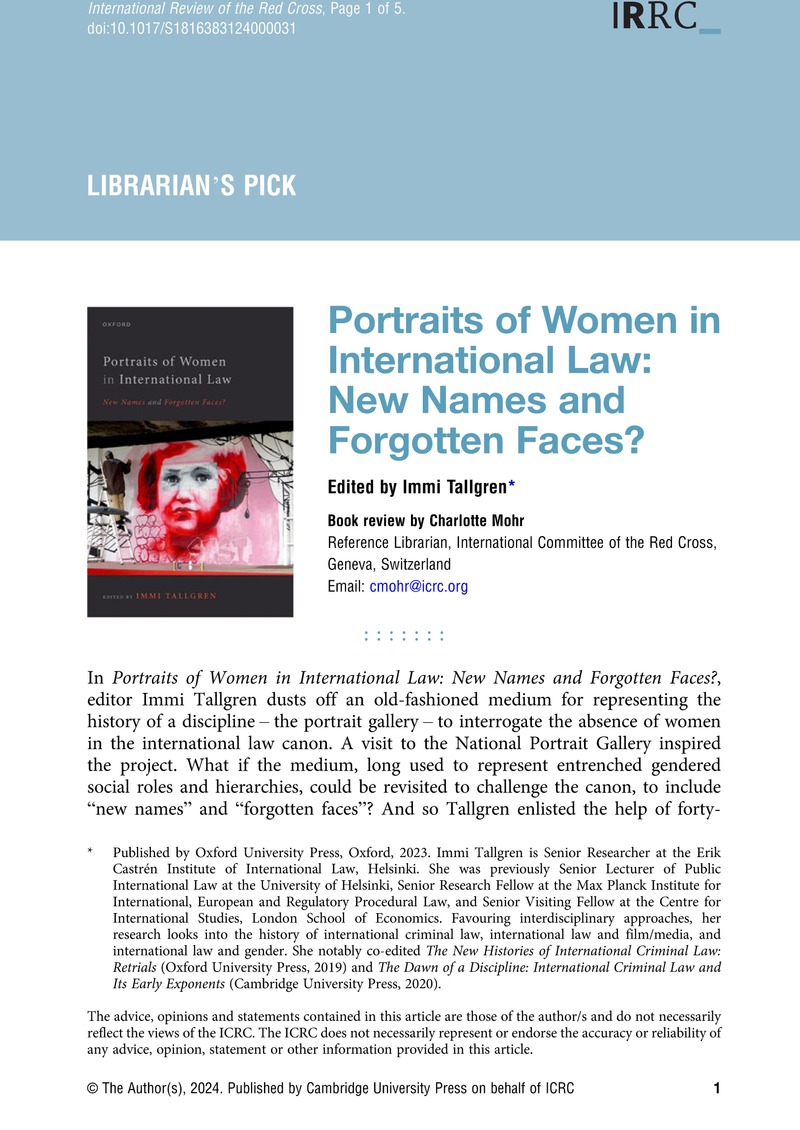Published online by Cambridge University Press: 11 March 2024

Published by Oxford University Press, Oxford, 2023. Immi Tallgren is Senior Researcher at the Erik Castrén Institute of International Law, Helsinki. She was previously Senior Lecturer of Public International Law at the University of Helsinki, Senior Research Fellow at the Max Planck Institute for International, European and Regulatory Procedural Law, and Senior Visiting Fellow at the Centre for International Studies, London School of Economics. Favouring interdisciplinary approaches, her research looks into the history of international criminal law, international law and film/media, and international law and gender. She notably co-edited The New Histories of International Criminal Law: Retrials (Oxford University Press, 2019) and The Dawn of a Discipline: International Criminal Law and Its Early Exponents (Cambridge University Press, 2020).
The advice, opinions and statements contained in this article are those of the author/s and do not necessarily reflect the views of the ICRC. The ICRC does not necessarily represent or endorse the accuracy or reliability of any advice, opinion, statement or other information provided in this article.
1 Karen Knop, “Foreword: Looking at Portraits”, in Portraits of Women in International Law, p. vii.
2 Frédéric Mégret, “Ghénia Avril de Sainte-Croix: Abolitionism and the League of Nations”, in Portraits of Women in International Law, pp. 149–151.
3 Sarah Riley Case, “Homelands of Mary Ann Shadd”, in Portraits of Women in International Law, p. 122.
4 Charlesworth, Hilary, Chinkin, Christine and Wright, Shelley, “Feminist Approaches to International Law”, American Journal of International Law, Vol. 85, No. 4, 1991CrossRefGoogle Scholar.
5 First female professor of law in France, first woman elected to the Institute of International Law and first woman to plead at the International Court of Justice, among other notable achievements.
6 First woman to become a member of the International Committee of the Red Cross and first female drafter of the Geneva Conventions.
7 First woman to preside over the UN General Assembly.
8 First female Whewell Scholar at Cambridge University and first female international lawyer at the International Labour Organization.
9 First woman elected to the International Law Commission.
10 Carter, Angela, “Notes from the Front Line”, in Michelene Wandor (ed.), On Gender and Writing, Pandora Press, London and Boston, MA, 1983, p. 69Google Scholar.